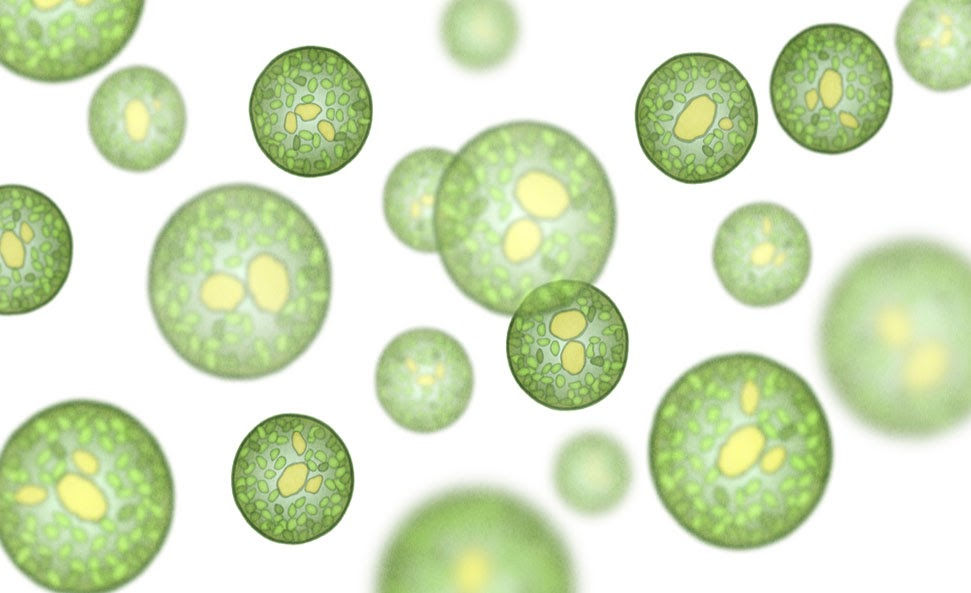Microalgae: Our Energized, Aquatic Friend
- Momentum

- Jul 1, 2020
- 4 min read
Nadine E. Hilman

From electricity to running vehicles, fossil fuels have become an undeniably ubiquitous portion of our lives, ever since the Industrial Revolution. Equally though, this same ubiquity is causing profound consequences on our environment. Not only do coal and petroleum fuel our engines, they also fuel global warming, ocean acidification and their umbrella issue of climate change, by emitting excessive amounts of CO2 into the environment. In light of the sweeping movement for sustainability, the scientific community is actively searching for more environmentally friendly and economically viable sources of energy. A promising, yet majorly underrecognized discovery includes the processing of biofuels from microalgae, our warm and easy-going aquatic friend.
Microalgae constitute either prokaryotic or eukaryotic autotrophic organisms found in a variety of environments, from waste-water to ocean water. As autotrophs, microalgae are capable of photosynthesis, a metabolic process that enables organisms to use light energy from the Sun to construct carbon compounds capable of storing chemical energy. In microalgae, chemical energy is typically stored in its lipids and carbohydrate compounds. Interestingly enough, this is an important characteristic that capacitates microalgae as a multifaceted energy source. Lipids, like those embedded in the cellular membranes of microalgae can be extracted as fatty acids in refineries, then transesterified into high energy density biofuels, to be used for the same purposes as fossil fuels. Moreover, its carbohydrate compounds, derived from the fixation of carbon in photosynthesis, can also be useful in the fermentation processes involved in the production of bioethanol. Lastly, the biomass of algae is combustible, and can be used as fuel. On a basic, biological level, microalgae has great potential as an energy source, but what makes it better than fossil fuels and other renewable energy sources?
Right off the bat, it can be said that microalgae is super adaptive; it can be likened to that one friend whose superpower is to fit in anywhere. Microalgae grows in a variety of environments, from ocean water, freshwater to waste-water. In fact, according to Auburn University, microalgae can be grown in wastewater released from factories, since “algae feeds on toxins”. Many speculate that microalgae farms can be built in the proximity of fossil fuel power plants, so that the CO2 released can be recycled when the organism photosynthesizes (Office of Energy Efficiency & Renewable Energy). Secondly, microalgae cultivates at rapid speeds compared to other crops, meaning that a greater yield of oil is produced in a shorter span of time. This makes harvesting microalgae economically and environmentally viable, as it can be produced quickly within a smaller area of land. Moreover, unlike bioethanol, another biodiesel, the cultivation of microalgae will not compete with food agriculture, since bioethanol is mainly derived from two frequently consumed crops -- sugar cane and sugar beet.
So you might be wondering: If the combustion of microalgae results in CO2 emissions, doesn’t that make it on par with unsustainable fossil fuels? Half of that statement is true, and the other half is false. Fossil fuels are unsustainable mainly because they unlock carbon sinks that took millions of years to form, and release carbon dioxide at an accelerated rate to its natural carbon cycle. Unlike fossil fuels, algae and other biofuels can be grown and renewed at a rapid rate. Thus they are renewable and sustainable sources in this sense. As aforementioned, the excessive emission of CO2 by fossil fuel combustion leads to severe environmental consequences. Another aspect that contributes to the sustainability of microalgae is its carbon-neutrality. The combustion of microalgae is viewed as a “carbon-neutral” process by the scientific community, meaning that there was no net release of CO2. Theoretically, each quantity of CO2 released during combustion is the same quantity of CO2 that was absorbed during metabolism in the microalgae’s lifecycle, resulting in a state of balance between carbon removal and carbon emission. Of course, the claim of a neutral carbon economy in microalgae fuel should also be taken with a pinch of salt, because it does not account for the CO2 released during the process of clearing land to farm microalgae, nor does it take into consideration the CO2 emitted by the machinery used in biorefineries.
If this is so, then what’s stopping us from scaling microalgae fuel up a notch? Microalgae harvesting presents a number of challenges. Since there are so many strains of algae, originating from different bodies of water, scientists are still researching the most efficient and energy dense strain of algae. Secondly, water availability, land costs and crop compatibility are also in the process of being determined. Overall, though microalgae is a rapidly growing crop, no system to cultivate it on a massive and commercial scale has been developed. Thus far, only the algae strains Spriulina and Dunaliella are capable of being farmed beyond 25 acres according to Jegathese and Farid.
Overall, despite its challenges, the rapid cultivation of microalgae, combined with its multifunctional applications as an energy source and its presumed carbon-neutrality, microalgae remains a promising sustainable alternative to fossil fuels. Many obstacles need to be overcome, but science shouldn’t give up on microalgae, not just yet. Here’s to microalgae -- our sustainable, energized aquatic friend.
Works Cited
Auburn University. "Algae As Energy: A Look To The Future - Climate, Energy, And Society - College Of Liberal Arts - Auburn University". Cla.Auburn.Edu, 2018, https://cla.auburn.edu/ces/energy/algae-as-energy-a-look-to-the-future/.Office of Energy
Efficiency & Renewable Energy. "Energy 101: Algae-To-Fuel". Energy.Gov, https://www.energy.gov/eere/videos/energy-101-algae-fuel.
Jegathese, Simon Jegan Porphy, and Mohammed Farid. "Microalgae As A Renewable Source Of Energy: A Niche Opportunity". Journal Of Renewable Energy, vol 2014, 2014, pp. 1-10. Hindawi Limited, doi:10.1155/2014/430203.


Comments